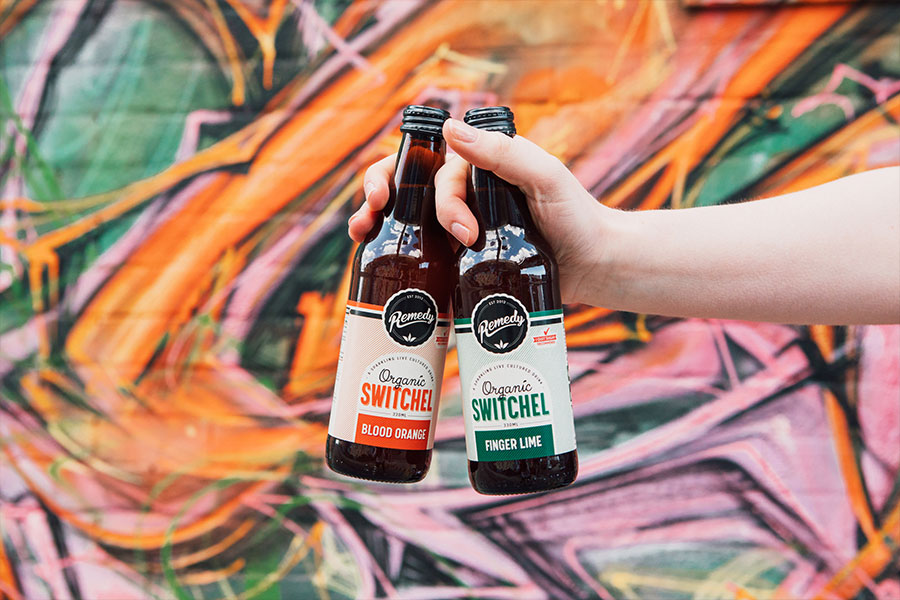We’re so lucky to have Remedy Nutritionist, Jacqueline Alwill on hand to offer guidance and advice on all things health and nutrition. But we’re all about sharing the love around here, so don’t think we’re going to keep all of her top tips to ourselves!
One of our favourites is this hit list for your shopping list to help you get through the next flu season unscathed.
7 Foods to Keep your Health in Good Nick
…and avoid winter lurgies
by Jacqueline Alwill
When the winter hits I have the pantry and fridge loaded with all my remedies to ward off any of those winter beasts (read : sickness) and even the hint of a sniffle. It’s a kitchen stock up, protocol if you will, I’ve used with lots of families and individuals whom I’ve treated in my nutrition practice too. We have an abundance of incredibly nutritious foods at our fingertips that we can use as our medicine, so there is no reason we shouldn’t right?
FERMENTED FOODS
Top the list, because they feed and fuel the bacteria in our gut so we can thrive. In nutrition we learnt first and foremost, (and as you may be understanding increasingly as it comes into the media spotlight – hurrah!) the gut is the seat of our health. If we attend to the integrity of our gut, health, energy and vitality flows.
Fermented foods come into play because they are the richest food sources of pre and probiotics (a team of gut feeders) and enzymes. We need these nutrients not only to feed the good bacteria in our gut, but so our bodies can then combat the bad bacteria we come into contact with increasingly over winter.
What many people do however is go through winter, unprepared until they get sick, then after 2 weeks feeling rotten, a trip to the doctor and a course of antibiotics, decide they’ll turn to their kitchen and food for support. If we flip this, we put ourselves in a much better position to avoid getting sick, doctors visits and the damage a course of antibiotics does to our liver and digestive system. So when next you hit the grocery stores or however you do your shop, be sure to top up on the key fermented foods and integrate them daily to be one step ahead of the game.
Fuel with these key fermented foods:
Kombucha:
Remedy is my preference. I’m a nutrition partner with Remedy Kombucha because the quality of their product is superior to other kombucha in the market. Not only is it the only kombucha brand in Australia to have close to 0g of sugar, (this comes as a result of their fermentation process) but Remedy are constantly testing, researching and increasing the quality and quantity of the live beneficial bacteria in their blend.
Sauerkraut and kimchi:
Purchase these from the fridge of your health food store / independent grocer and aim for an organic brand. Integrate these into your diet daily if possible through fritters, wraps or simply on the side of your steamed veg, salad or soup. I’ve been known to have a small portion of kraut just on its own pre dinner as a snack, and I’m sure I’m not the only one.
Miso:
Is a heavenly little cup of warmth over the winter months and as a fermented soy bean is another great source of probiotics and enzymes.
CITRUS FRUITS
An oldie but a goodie – the citrus fruits! A few reasons why you want them sitting on hand and how to consume them as well. Citrus fruits are a seasonal winter fruit. Important stuff this eating for the season business and even more so as increasingly fruits and vegetables become available year round as a result of imports. Mother nature however recognises the change in season and enriches her produce – lemons, limes, oranges, grapefruit – with the vitamins we need including supercharged antioxidant, Vitamin C, in order to support our bodies and their fight against colds and flus! Eat them in winter!
And, to note, I say eat as much as possible when it comes to the sweeter variety here such as oranges. Whilst it’s tempting to juice a bunch of oranges and have a big glass, the benefit to our bodies and extraction of vitamins actually comes through eating the whole fruit, including all the juicy fibre. Fibre for gut health, vitamins from the whole fruit and also so that we avoid the big dump of (fructose) sugar that comes from simply juicing. Lemons are a bend on the eat the whole fruit rule. Few of us would want to anyway. So with lemons aim to use them every day throughout these cold months. Wake with the juice of a lemon and some warm filtered water to cleanse, kickstart and fire up the vitamin and antioxidant status in your morning, squeeze liberally over salads and steamed vegetables, fish, chicken, you name it. Have the bowl of citrus as a source of nutrition in your kitchen always.
BONE BROTH
Up there with fermented tea (kombucha) as an old remedy (pardon the Remedy booch pun) used for restoring the body to good health. As we now readily have many brands of beautiful organic bone broths available to us, you can purchase and keep in the fridge or freezer should the time not be available to slow cook your own. And that’s perfectly fine. We do not all have hours on a weekend to spend simmering away, when you can do so, but if it doesn’t allow aim for high quality that will deliver a broth rich in nutrition.
HERBAL TEA
Because it’s so easy to forget to drink plain water when it’s cold isn’t it? We’ve all been guilty of it. Water and the hydration of our cells is key for energy and immunity. We can live for days without food and survive but our cells cannot function and communicate effectively without H20. Stock up with some herbal (not caffeinated as the caffeine acts as a diuretic) teas in the cupboard.
Simple hydration in the herbal tea department can include:
- peppermint tea – lovely digestive
- liquorice tea – great for a sweet hit
- chamomile – calming and soothing
- ginger – digestive and immune boosting
- passionflower – or a chamomile passionflower blend, for more restful sleep
DARK AND LEAFY GREENS
For life! As a nutritionist I will never let up on telling people to eat their greens and be creative with how they eat them. Blend them into soup or smoothies (aim to drink smoothies at room temp in winter so as to not chill the body or digestive system), steam veggies at night instead of eating salads, pop them in your eggy fry up at brekky, whatever and however is a great way to get those greens in.
Stock the fridge with these top players:
- spinach
- kale
- broccoli
- chinese vegetables
- fresh herbs
MANUKA HONEY
An important one to mention particularly at present when I see more supermarkets with Manuka sitting on their shelf. There is admittedly some clever marketing going on around the Manuka ingredient and therefore it’s easy enough to think you’re buying something with nutrition / medicinal benefit when the reality is you may not. Look out for the Manuka MGO (methylglyoxyl) potency stamp. MGO is the main antibacterial ingredient in the Manuka. This stamp is the MGO number with a + sign on the packaging of good quality Manuka you may pick up. The numbers vary greatly. That which you can eat is generally between 100-400 MGO, higher than that have a strong medicinal effect 400 and above.
GINGER
Finally, our humble little root in the fruit and vegetable drawer, ginger. A circulatory stimulant (goodbye cold hands and feet during winter), digestive aid and powerful immune booster. There are so many ways you can use this root in your cooking as a medicinal food. To top the list, warm and soothe the body, think curries, soups, carrot and ginger juices, or a simple ginger, lemon and honey tea.
Because proactive is of greater benefit than being reactive when it comes to health, I encourage you to fill the pantry and fridge with these ingredients and keep close to you always…
‘Let food be thy medicine and thy medicine be thy food’ (Socrates)
This post was originally published on The Brown Paper Bag
Banner image credit: Jacqueline Alwill for The Brown Paper Bag.



